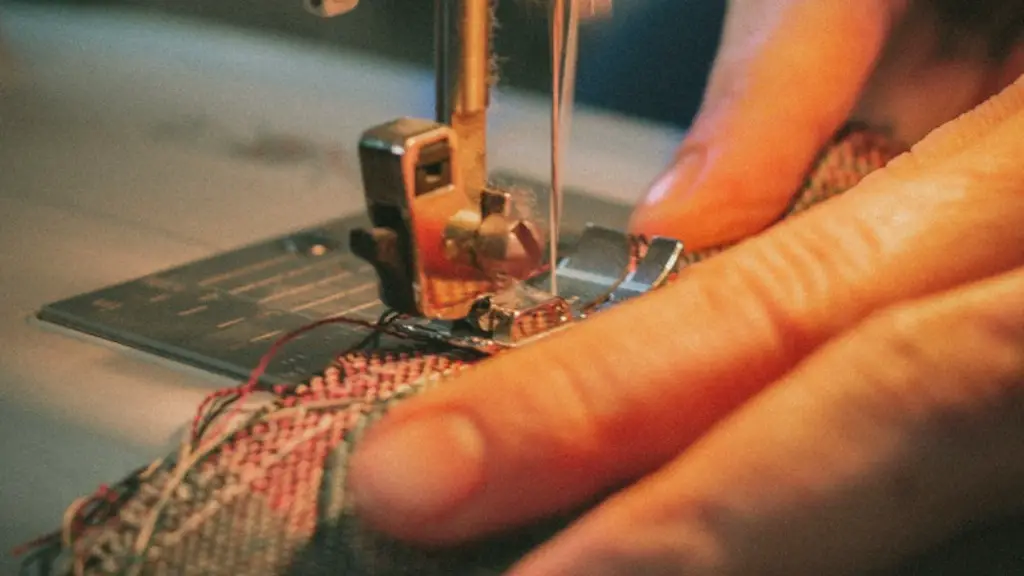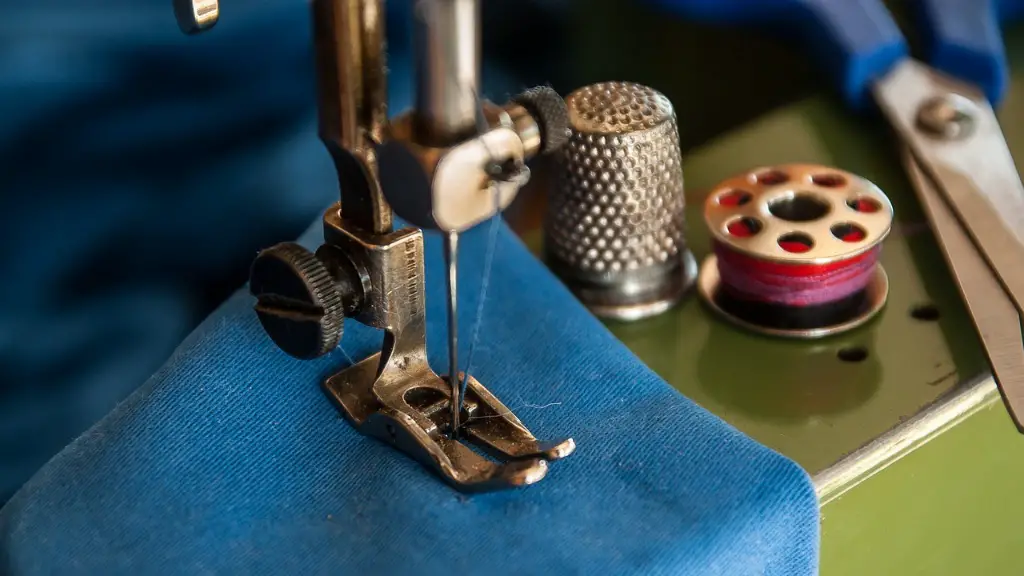How to Make a Dress with a Sewing Machine
Creating a dress can be an exciting and rewarding experience. Sewing machines are a great tool that can help novice and experienced sewers alike make beautiful dresses with ease. This article explains how to make a dress with a sewing machine.
Before you start, it’s important to understand the basics of sewing garments with a machine. You’ll need to know how to thread the machine, set the stitch length and width, and adjust the tension. Understanding how to attach and adjust the presser foot is also important. If you are a beginner, it is wise to practice using the machine on pieces of scrap fabric before starting your project.
Once you have the basic skills down, you’ll need to choose a design and fabric for your dress. You can find patterns for dresses online or in books. Select fabrics that are suitable for the type of dress you plan to make. For example, for a more professional-looking dress, you might consider using a medium-weight fabric like cotton or rayon. For a more casual dress, light-weight fabric such as chiffon or linen may be more appropriate.
Once you are ready to begin, start by cutting out the pattern pieces for your dress. When cutting out the pattern, make sure to use the correct cutting tools such as scissors or a rotary cutter. Transfer the pattern pieces onto your fabric and then sew each piece together. Start from the bottom of the dress and work up. Use a seam guide to keep your stitches even and consistent.
When sewing the pieces together pay attention to seam allowances. Most dresses require a 5/8 inch seam allowance. Once the body of the dress is complete, you can begin attaching the finishing touches such as necklines, waistbands, hems, and sleeves. Serge the seams for a professional-looking finish.
When you are finished sewing, it’s time to inspect your work. Check for any loose threads and remove them if necessary. Make sure all seams are secure and that there are no gaping holes. To give the dress a polished finish, press the seams and hem with an iron.
Finally, if necessary, make any alterations to the dress to get the perfect fit. Adding darts, taking in seams, letting out seams and other adjustments can help you get the perfect fit. If you are a beginner, it is a good idea to have a professional tailor make the adjustments for you.
Fabric Selection
Selecting the right fabric for your dress is essential for the success of the project. The type of fabric you choose will depend on the type of dress you will be making. Fabrics such as cotton, rayon, chiffon and linen are all suitable for making a dress. Experienced sewers might also consider silk or velvet for a more luxurious feel.
When selecting a fabric, it’s important to consider the weight and drape of the fabric. Heavier fabrics are better for fitted garments and will provide more structure to the dress. Lighter fabrics are more suitable for a fluid, flowing look. Make sure to examine the fabric to check for any flaws and imperfections.
When working with delicate fabrics, such as silk, it is important to use the right type of thread for the project. Threads that are too thick or too thin can cause problems and leave visible stitches on the garment. Choose threads that match the fabric in color and weight so that they blend seamlessly.
To finish off the dress, choose the right kind of closure for the design. Buttons and zippers are the most common closure types, but there are other options such as ties, snaps and hooks and eyes. Make sure to use the appropriate tools to attach the closures securely.
Take Measurements
Taking accurate measurements is important if you want your dress to fit properly. Take measurements around the chest, waist and hips to determine what size pattern pieces to cut. For the best fit, you may want to enlist the help of a friend or family member to help you take the measurements.
You should also consider taking additional measurements such as the armhole depth, shoulder width, and length from shoulder to waist to ensure the dress will fit properly. For a more customized fit, you may even want to take measurements for your top, bodice and skirt sections.
Once you have all the measurements, you can use a conversion chart or calculator to convert them into pattern sizes. Once the pattern pieces are cut out, use pins to mark the seam lines on the fabric pieces before sewing. This will help you get a precise fit and will reduce the likelihood of costly mistakes.
Sewing Skills
Understanding how to use your sewing machine is essential when making a dress. Start by learning how to thread the machine, how to set the stitch type and length and how to adjust the tension. Sew test pieces of scrap fabric to practice using the machine and controlling its speed.
Attaching and adjusting the presser foot is also important. The presser foot pressure should be light when sewing delicate fabrics and heavier when sewing thicker fabrics. Understand how to attach and disconnect the foot, as well as how to adjust the foot pressure.
In addition to using the machine, you’ll need to gain knowledge in other garment construction techniques. Knowing how to sew a French seam, attach a collar, sew a hem and create a professional-looking finish can help you make a dress that looks like it was made by a professional.
Finishing Touches
Once the dress is finished, inspect it for any loose threads or glaring mistakes. Secure the seams and make sure all the pieces fit properly. Press the seams and the hem with an iron for a polished finish.
If necessary, make any alterations to get a perfect fit. It may be a good idea to have a professional tailor make any alterations for best results. Choose the right kind of closure for your dress and attach it securely.
Finally, add any additional embellishments to the dress if desired. Embellishments can give the dress its own unique style and can really set it apart from the crowd. Beads, sequins, ruffles and embroidery are all great ways to add that special touch to your dress.
Final Check
Before you wear your dress, make sure it is in perfect condition. Check for any loose threads or small holes that may need to be secured. Examine the dress for any imperfections or areas that need to be adjusted. Add any last minute touches before you wear it.
Once the dress is ready to wear, enjoy showing it off. You’ll be proud of your accomplishment and you can take pride in knowing that you created something beautiful with your own two hands.





